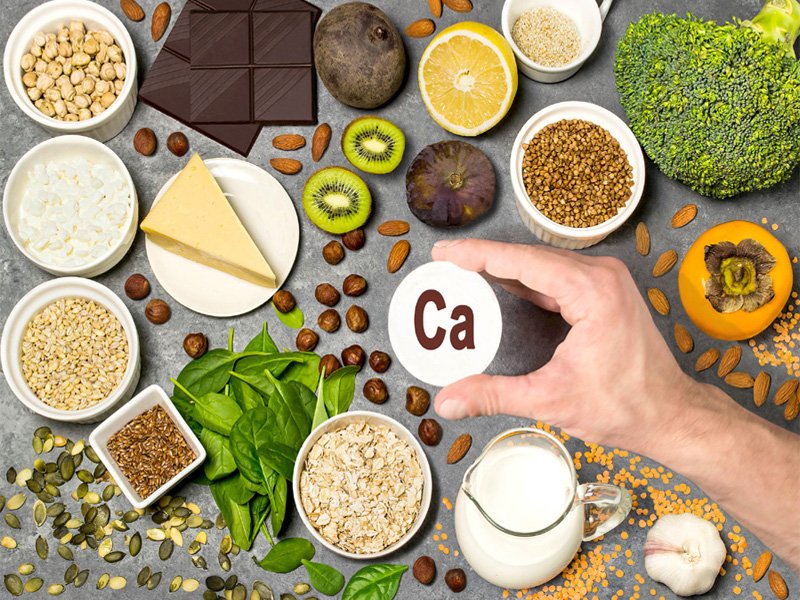What are the properties of calcium in the diet and its benefits for teeth and bones? Discover its functions, recommended amounts and rich foods.
The calcium is the mineral that possess a greater amount in the human body. Not surprisingly, teeth and bones take the highest proportion of calcium, with 99%. However, body tissues, blood, neurons and other body fluids take the remaining part, about 1%.
The properties of calcium make it the most important of the minerals linked to the growth, maintenance and reproduction of the human body, and as it does not help to strengthen bones and teeth, keeping them strong and healthy.
Another benefit of calcium is that it helps blood clotting, nerve signals, relaxation and muscle contraction, as well as the release of some hormones; likewise, it is essential for the normal beating of the heart.
Calcium functions
- It is part of both teeth and bones, as well as tissues.
- Necessary for proper blood clotting.
- Actively participates in muscle contraction.
- It participates in the transmission of nerve impulses, by finding it inside the cells of our body.
- Stimulates the secretion of hormones.
- It contributes to the activation of different enzymes, which act as meters in chemical reactions.
- Participates in the permeability of cell membranes.
- Helps in the absorption of vitamin B12 (cobalamin).
Calcium benefits
In addition to the functions of calcium indicated in the previous section, it also provides the following benefits:
- It helps us enjoy strong bones and teeth.
- Correct blood clotting.
- Helps prevent osteoporosis, especially in women over 35 years of age.
Recommended daily amounts of calcium
| Age | Men | Women | |
| 0-6 months | 210 | 210 | |
| 7-12 months | 270 | 270 | |
| 1-3 years | 500 | 500 | |
| 4-8 years | 800 | 800 | |
| 9-13 years | 1300 | 1300 | |
| 14-18 years | 1300 | 1300 | |
| 19-50 years | 1000 | 1000 | |
| +51 years | 1200 | 1200 | |
| Pregnancy and breastfeeding | -18 years | 1300 | |
| Pregnancy and breastfeeding | +18 years | 1000 |
Deficiency symptoms of calcium deficiency
Calcium deficiency can cause:
- Osteoporosis (decrease in bone mass, as well as increased fragility of the bones).
- Rickets (bone deformity and low mineralization in the bones).
- Tetany (alteration of muscle contraction).
What are the foods richest in calcium?
Below we offer you a complete table with information on some of the foods with a higher calcium content.
In this sense, we indicate the amount of calcium in food and beverages per 100 grams.
| Fresh ranchero cheese | 475 mg |
| Sardines in oil | 405 mg |
| Almonds | 243 mg |
| Hazelnuts | 240 mg |
| Crawfish | 220 mg |
| Prawns | 218 mg |
| Prawns | 218 mg |
| Yogurt | 155 mg |
| Dried figs | 152 mg |
| Chickpeas | 148 mg |
| Pistachios | 125 mg |
| Cow milk | 120 mg |
| White beans | 119 mg |
| Chard | 114 mg |
As we can see, many are the foods that contain calcium, but mainly and since always calcium has been associated with milk and dairy products, such as yogurt, cheese, and butter.
On many occasions we associate the level of calcium with the fat that the food may contain, but this aphorism is not true at all, since calcium has nothing to do with the proportion of fat that milk, yogurt, butter or other foods high in calcium.
Other foods rich in calcium are vegetables, such as broccoli, collard greens, kale, mustard, or Chinese cabbage.
Sardines, salmon, shellfish, almonds, and dried legumes are also other sources of calcium.
There are some foods prepared for those people who do not usually eat so many dairy products, and that serve as a source of increase of this mineral, are those products such as bread and orange juices that contain a sufficient proportion of calcium for the body.
If there is a certain lack of calcium in the body, people can develop a condition that leads to osteoporosis, hypertension or other disorders.
However, there are other people who are lactose intolerant, that is, it is difficult for them to digest milk sugar and for this reason, different dairy products have been elaborated, which contain calcium that cannot be supplied by said milk or are substituted by others such as rice milk, soy milk, almond milk, which contains the necessary calcium.































